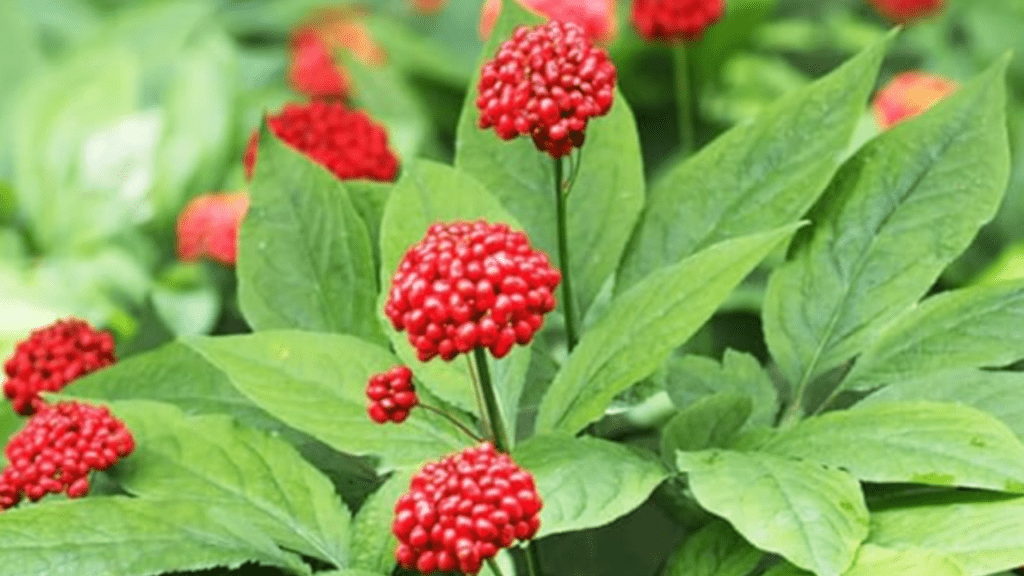
Ginseng Plant Seeds: How to Grow and Harvest Your Own Ginseng
Ginseng is a popular medicinal herb known for its numerous health benefits, and growing and harvesting your own ginseng plant seeds can be a rewarding and profitable venture. In this comprehensive guide, we will walk you through the best practices for growing and harvesting ginseng, including the ideal growing conditions, planting techniques, and tips for a successful harvest. Whether you are a seasoned gardener or new to the world of herbal cultivation, this article will provide valuable information to help you successfully grow and harvest your own ginseng plant seeds.
Ginseng is a powerful herb known for its many health benefits, including boosting the immune system, improving cognitive function, and increasing energy levels. It has been used in traditional medicine for centuries and is now gaining popularity in modern natural health practices.
Growing and harvesting your own ginseng plant seeds can be a rewarding and profitable venture. To grow ginseng successfully, it is important to provide the ideal growing conditions, including well-drained soil, shade, and proper ventilation. Planting techniques such as stratifying the seeds, planting in the fall, and providing the right amount of water and nutrients are crucial for a successful ginseng harvest.
Harvesting ginseng at the right time and properly drying the roots are also important steps in the process. By following best practices for growing and harvesting ginseng, you can ensure a high-quality yield and reap the many benefits of this powerful herb. Whether you are an experienced gardener or new to herbal cultivation, this comprehensive guide will provide valuable information to help you successfully grow and harvest your own ginseng plant seeds.
Table of Contents
ToggleUnderstanding Ginseng Plant Seeds
Ginseng has been used in traditional medicine for centuries and is now gaining popularity in modern natural health practices. Growing and harvesting your own ginseng plant seeds can be a rewarding and profitable venture. To grow ginseng successfully, it is important to provide the ideal growing conditions, including well-drained soil, shade, and proper ventilation. Planting techniques such as stratifying the seeds, planting in the fall, and providing the right amount of water and nutrients are crucial for a successful ginseng harvest. Harvesting ginseng at the right time and properly drying the roots are also important steps in the process. By following best practices for growing and harvesting ginseng, you can ensure a high-quality yield and reap the many benefits of this powerful herb. Whether you are an experienced gardener or new to herbal cultivation, this comprehensive guide will provide valuable information to help you successfully grow and harvest your own ginseng plant seeds.
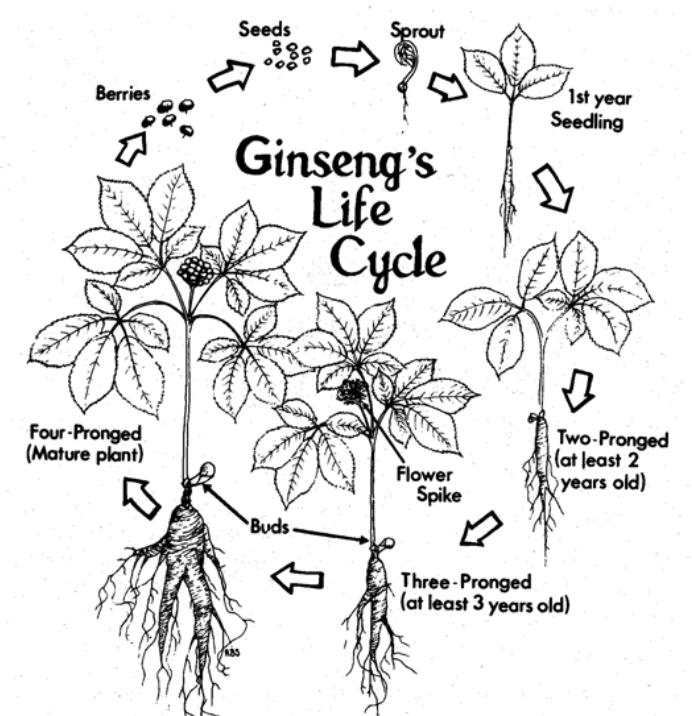
What are Ginseng Plant Seeds?
Description and characteristics of ginseng seeds.
Ginseng plant seeds are the starting point for growing your own ginseng plant. These seeds are typically small, round, and light brown in color. They are produced by the ginseng plant and contain the genetic material needed to grow a new plant. Ginseng seeds are often found in the red berries that develop on the plant in the fall.
Characteristics of ginseng seeds include a hard outer shell that protects the inner embryo. This shell can make it challenging for the seeds to germinate, which is why proper planting techniques are important. Ginseng seeds also have a dormancy period, which means they require specific conditions to break this dormancy and begin growing into a new plant.
To successfully grow ginseng from seed, it is important to understand the characteristics of the seeds and provide the ideal growing conditions to support germination and growth. With the right knowledge and care, you can cultivate your own ginseng plant from seed and enjoy the many benefits of this valuable herb.
Overview of the ginseng plant lifecycle.
The ginseng plant lifecycle begins with the production of small, round, light brown seeds. These seeds are found in the red berries that develop on the plant in the fall. The seeds have a hard outer shell that protects the inner embryo, making it challenging for them to germinate. They also have a dormancy period, requiring specific conditions to break this dormancy and begin growing into a new plant. Proper planting techniques and understanding the characteristics of the seeds are important for successful growth. With the right knowledge and care, you can cultivate your own ginseng plant from seed and enjoy the many benefits of this valuable herb.
Benefits of Growing Ginseng from Seeds
Medicinal and economic benefits.
Ginseng is a valuable herb that has both medicinal and economic benefits. It is used in traditional medicine to treat a variety of health conditions, including boosting the immune system, reducing stress, and improving cognitive function. In addition to its medicinal benefits, ginseng is also a valuable crop that can be sold for a profit.
Growing ginseng from seed can be a profitable venture, as ginseng roots can be sold for a high price. It is important to understand the characteristics of the seeds and provide the ideal growing conditions to support germination and growth. With the right knowledge and care, you can cultivate your own ginseng plant from seed and enjoy the many benefits of this valuable herb.
It is also important to note that ginseng is an endangered species in the wild due to overharvesting, so growing it from seed can help to preserve the plant and ensure its availability for future generations. Overall, growing ginseng from seed can provide both medicinal and economic benefits for those who take the time to learn and care for this valuable plant.
Ecological benefits and uses in traditional medicine.
Ginseng is a valuable herb that has both ecological benefits and medicinal uses in traditional medicine. In traditional medicine, ginseng is used to treat a variety of health conditions, such as boosting the immune system, reducing stress, and improving cognitive function. It has been used for centuries in traditional Chinese medicine and is highly valued for its medicinal properties. In addition to its medicinal benefits, ginseng also has ecological benefits as it helps to support biodiversity and healthy ecosystems. It is also considered a valuable crop that can be sold for a profit. However, it’s important to note that ginseng is an endangered species in the wild due to overharvesting, so it’s essential to cultivate it responsibly. By understanding the characteristics of the seeds and providing the ideal growing conditions, we can support the sustainability of ginseng and its availability for future generations. Overall, ginseng is a valuable plant that provides both ecological benefits and medicinal uses, making it an important herb to cultivate and preserve.
Where to Buy Ginseng Seeds
Recommended sources and suppliers.
If you are looking to buy ginseng seeds, it is important to find a reputable source or supplier to ensure that you are getting high-quality seeds. There are a variety of online retailers and nurseries that specialize in selling ginseng seeds. It is recommended to do thorough research and read reviews to find a trustworthy source. Additionally, contacting local botanical gardens or conservation organizations may also provide information on where to purchase ginseng seeds. It is important to buy from a supplier that is committed to sustainable and ethical cultivation practices to ensure the long-term viability of ginseng. By purchasing from a reputable source, you can support responsible cultivation and preservation of this valuable herb.
Importance of choosing reputable sellers.
When it comes to buying ginseng seeds, it’s important to choose reputable sellers. This ensures that you are getting high-quality seeds that will have a better chance of growing into healthy plants. Reputable sellers are also more likely to prioritize sustainable and ethical cultivation practices, which is important for the long-term viability of ginseng. It’s important to do thorough research and read reviews to find a supplier that is committed to responsible cultivation and preservation of ginseng. You can also consider contacting local botanical gardens or conservation organizations for recommendations on where to purchase ginseng seeds. By choosing a reputable seller, you are not only ensuring the quality of the seeds but also supporting the sustainability of ginseng for future generations.
Preparing Ginseng Plant Seeds for Planting
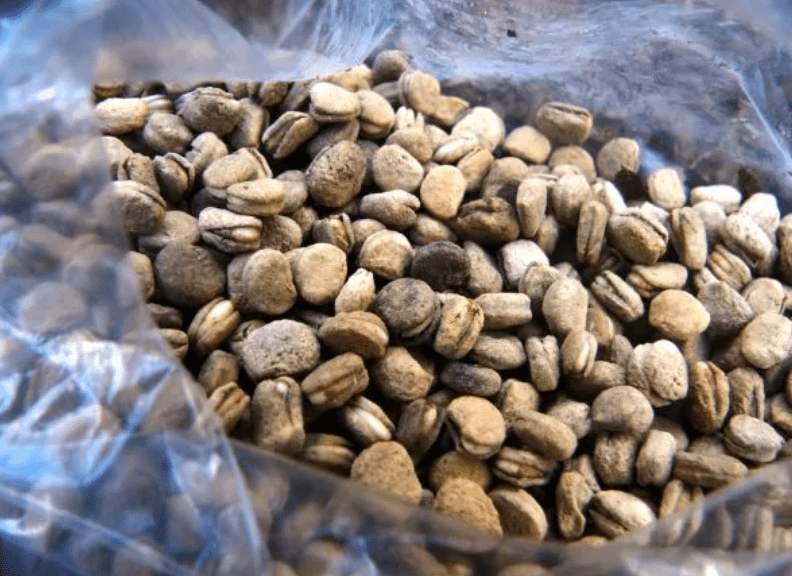
Seed Treatment and Preparation
Techniques for preparing seeds to enhance germination.
There are several techniques for preparing ginseng seeds to enhance germination. One method is to stratify the seeds, which involves exposing them to a period of cold temperatures to break their dormancy. This can be done by placing the seeds in a container with damp sand or peat moss and refrigerating them for several months. Another technique is to scarify the seeds, which involves nicking or scratching the seed coat to help water and air penetrate the seed, promoting germination. This can be done by gently rubbing the seeds with sandpaper or making small cuts in the seed coat with a knife. It’s important to carefully follow the recommended preparation techniques to increase the chances of successful germination and the healthy growth of ginseng plants.
Stratification process and its importance.
The stratification process is an important step in preparing ginseng seeds for planting. This process involves exposing the seeds to a period of cold temperatures to break their dormancy. By placing the seeds in a container with damp sand or peat moss and refrigerating them for several months, you can help to simulate the natural conditions that would occur in the wild during the winter months. This allows the seeds to undergo a natural process that prepares them for germination and healthy growth. The stratification process is important because it increases the likelihood of successful germination and the development of strong, healthy ginseng plants. It is an essential step in the cultivation of ginseng and should be carefully followed to ensure the best results.
Soil Preparation
Ideal soil types for ginseng cultivation.
When it comes to cultivating ginseng, the ideal soil types are well-drained, loamy soils with a pH level between 5.5 and 6.0. These types of soils provide the right conditions for ginseng plants to grow and thrive. It’s important to test the soil and make any necessary adjustments before planting ginseng. Adding organic matter such as compost or well-rotted manure can improve the soil structure and fertility, which is beneficial for ginseng cultivation. Additionally, it’s important to ensure that the soil has good drainage to prevent waterlogging, as excessive moisture can be detrimental to ginseng plants. Overall, selecting the right soil type and preparing the soil properly are essential steps in successful ginseng cultivation.
Soil testing and amendments for optimal growth.
Before you start planting ginseng, it’s important to test the soil and make any necessary amendments to ensure optimal growth. You can get a soil testing kit from your local agricultural extension office or a garden center. The kit will help you determine the pH level and nutrient content of the soil. Once you have the test results, you can make any necessary adjustments to the soil. For example, if the pH level is too low, you can add lime to raise it to the optimal range for ginseng cultivation. Additionally, you may need to add other amendments such as organic matter, fertilizer, or micronutrients to ensure that the soil provides the best environment for ginseng growth. By testing the soil and making the necessary amendments, you can ensure that your ginseng plants have the best possible conditions for successful growth.
Planting Ginseng Seeds
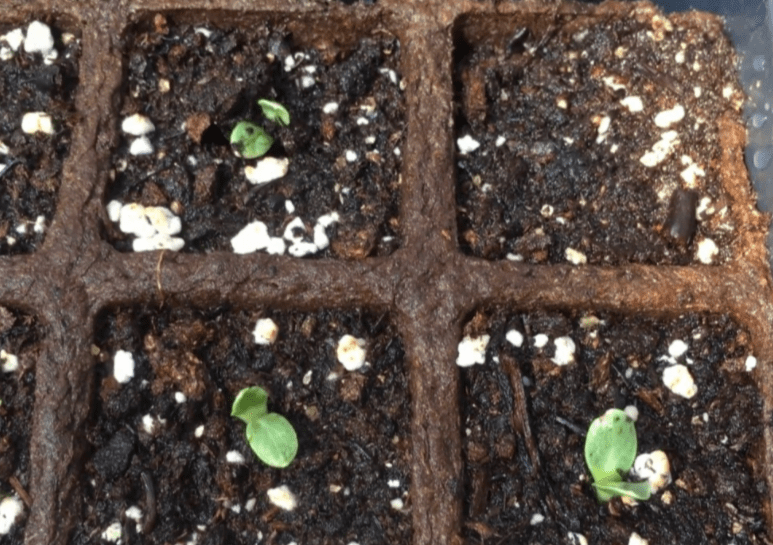
Timing and Climate
Best planting seasons for ginseng.
Ginseng is a popular herb known for its medicinal properties, and the best planting seasons for ginseng depend on the climate and location. In general, the best time to plant ginseng seeds is in the early fall or late spring. Planting during these times allows the seeds to establish themselves before the harsh winter or summer weather sets in. It’s important to choose a planting time that aligns with your specific climate and growing conditions, as ginseng has specific temperature and moisture requirements for optimal growth.
In addition to timing, selecting the right soil type and preparing the soil properly are essential steps in successful ginseng cultivation. Before planting ginseng, it’s important to test the soil and make any necessary amendments to ensure optimal growth. This can involve adjusting the pH level, adding organic matter, and providing the necessary nutrients for healthy ginseng plants.
Overall, ginseng cultivation requires careful attention to soil preparation, timing, and climate to ensure a successful harvest. By following best practices for planting and caring for ginseng, you can increase the likelihood of a bountiful crop.
Climate requirements for successful growth.
In order to successfully grow ginseng, it’s important to consider the climate requirements for optimal growth. Ginseng has specific temperature and moisture needs, so it’s important to choose the right time to plant based on your specific climate and growing conditions. Generally, the best time to plant ginseng seeds is in the early fall or late spring, as this allows the seeds to establish themselves before extreme winter or summer weather sets in. It’s also important to select the right soil type and properly prepare the soil before planting. This may involve testing the soil, adjusting the pH level, adding organic matter, and providing the necessary nutrients for healthy ginseng plants. By paying attention to soil preparation, timing, and climate, you can increase the likelihood of a successful ginseng harvest. Successful ginseng cultivation requires careful attention to these factors, but with the right approach, you can achieve a bountiful crop.
Planting Techniques
Step-by-step guide to sowing ginseng seeds.
When planting ginseng seeds, it’s important to consider the climate requirements for successful growth. Ginseng has specific temperature and moisture needs, so it’s best to plant the seeds in the early fall or late spring to allow them to establish themselves before extreme winter or summer weather. It’s also important to choose the right soil type and properly prepare the soil by testing it, adjusting the pH level, adding organic matter, and providing necessary nutrients for healthy ginseng plants. By paying attention to soil preparation, timing, and climate, you can increase the likelihood of a successful ginseng harvest.
When sowing the seeds, it’s important to follow a step-by-step guide to ensure proper planting techniques. First, create raised beds or mounds for planting, then sow the seeds at the recommended depth and spacing. After planting, water the seeds thoroughly and provide the necessary care and attention to ensure their growth.
Following best practices for planting and caring for ginseng can increase the likelihood of a bountiful crop. With careful attention to climate requirements, soil preparation, and planting techniques, you can achieve successful ginseng cultivation.
Spacing and depth recommendations.
When planting ginseng, it’s important to follow specific spacing and depth recommendations to ensure the best growth and yield. The recommended depth for planting ginseng seeds is about 1 inch deep. It’s important to space the seeds about 4 inches apart within the row and leave about 6-8 inches between rows. This spacing allows the ginseng plants to have enough room to grow and spread out their roots. Proper spacing also helps to prevent overcrowding, which can lead to stunted growth and reduced yield. By following these spacing and depth recommendations, you can give your ginseng plants the best chance for healthy growth and a successful harvest.
Caring for Ginseng Plants
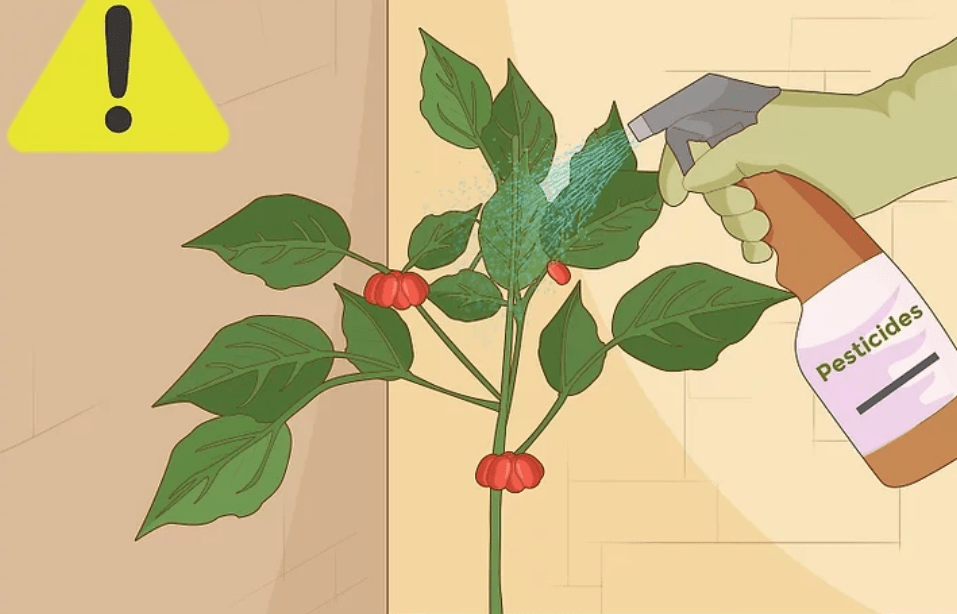
Watering
Irrigation needs and techniques.
When it comes to ginseng cultivation, it’s important to pay careful attention to irrigation needs and techniques. Ginseng plants require consistent and adequate moisture to thrive, so it’s important to provide them with the right amount of water at the right time. Irrigation techniques such as drip irrigation or soaker hoses can be used to ensure that the plants receive water directly to their roots and minimize water waste. It’s also important to monitor the soil moisture levels and adjust the irrigation schedule as needed to prevent overwatering or underwatering the plants. Additionally, maintaining proper drainage in the ginseng beds is crucial to prevent waterlogging and root rot. By implementing effective irrigation techniques and meeting the irrigation needs of ginseng plants, you can support their growth and ensure a successful harvest.
Importance of proper watering for ginseng.
Proper watering is crucial for the successful growth of ginseng plants. It is important to provide consistent and adequate moisture to the plants in order for them to thrive. Utilizing irrigation techniques such as drip irrigation or soaker hoses can ensure that the plants receive water directly to their roots and minimize water waste. Monitoring soil moisture levels and adjusting the irrigation schedule as needed is also important to prevent overwatering or underwatering. Proper drainage in the ginseng beds is essential to prevent waterlogging and root rot. By implementing effective irrigation techniques and meeting the irrigation needs of ginseng plants, you can support their growth and ensure a successful harvest.
Fertilization
Essential nutrients for ginseng growth.
Fertilization is an important aspect of promoting the growth of ginseng plants. Providing the essential nutrients that ginseng needs, such as nitrogen, phosphorus, and potassium, can help support the health and development of the plants. It is important to perform soil tests to determine the nutrient levels in the soil and apply the appropriate fertilizers to replenish any deficiencies. Organic fertilizers, such as compost or aged manure, can also be beneficial for improving soil structure and providing a slow-release source of nutrients. Additionally, maintaining proper drainage in the ginseng beds is crucial to prevent waterlogging and root rot. By implementing effective irrigation techniques and meeting the irrigation needs of ginseng plants, you can support their growth and ensure a successful harvest.
Fertilization schedule and methods.
Proper fertilization is crucial for the growth of ginseng plants. It is important to perform soil tests to determine the nutrient levels in the soil and apply the appropriate fertilizers to replenish any deficiencies. Typically, ginseng plants require fertilization with nitrogen, phosphorus, and potassium. Organic fertilizers, such as compost or aged manure, can also be beneficial for improving soil structure and providing a slow-release source of nutrients.
In terms of the fertilization schedule, it is recommended to fertilize ginseng plants in early spring before the plants emerge and again in late summer or early fall. This provides the plants with the necessary nutrients for healthy growth. It is important to follow the recommended guidelines for the application of fertilizers and to avoid over-fertilizing, as this can have negative effects on the plants.
In addition, proper drainage in ginseng beds is essential to prevent waterlogging and root rot. By implementing effective irrigation techniques and meeting the irrigation needs of ginseng plants, you can support their growth and ensure a successful harvest. Overall, following a proper fertilization schedule and methods is essential for promoting the growth and health of ginseng plants.
Light and Temperature Requirements
Ginseng plants have specific light and temperature requirements for optimal growth. They prefer a partially shaded environment with dappled sunlight, as direct sunlight can be too harsh for them. In terms of temperature, ginseng plants thrive in cooler climates and need a consistent temperature range of 50-80 degrees Fahrenheit. It is important to monitor the temperature and light conditions in the growing area to ensure that they meet the needs of the ginseng plants. This will help to promote healthy growth and ensure a successful harvest.
Weed and Pest Management
are crucial for the successful growth of ginseng plants. Weeds can compete with ginseng for nutrients and water, so it’s important to keep the growing area free of weeds. Manual weeding and the use of mulch can help to control weed growth and protect the ginseng plants. Additionally, pest management is important to prevent insects and diseases from damaging the plants. Implementing integrated pest management techniques, such as using natural predators and organic pesticides, can help to keep pests at bay while minimizing the use of harmful chemicals. By effectively managing weeds and pests, you can ensure the health and productivity of your ginseng crop.
Transplanting and Thinning Ginseng Plants
When and How to Transplant
Signs that seedlings are ready for transplanting.
Transplanting ginseng seedlings is an important step in the growth process. There are a few signs to look for to determine if your seedlings are ready for transplanting. First, the seedlings should have at least 3-4 true leaves before they are transplanted. This indicates that the seedlings are strong and healthy enough to be moved to a different location. Additionally, the roots of the seedlings should be well-developed and have a good amount of white, healthy roots. This shows that the seedlings are established enough to survive the transplanting process. It is also important to make sure that the weather and soil conditions are suitable for transplanting, as this can impact the success of the transplant. Properly timing the transplanting process and ensuring that the seedlings meet these criteria can help ensure the successful growth of your ginseng plants.
Best practices for transplanting ginseng.
Transplanting ginseng seedlings is a crucial step in cultivating healthy ginseng plants. It’s important to wait until the seedlings have at least 3-4 true leaves before transplanting them, as this indicates that they are strong and healthy enough to survive the process. Additionally, check the roots of the seedlings to ensure they are well-developed and have a good amount of white, healthy roots. This is a sign that the seedlings are established enough to withstand the transplanting process. It’s also essential to consider the weather and soil conditions before transplanting, as these factors can impact the success of the transplant. By properly timing the transplanting process and ensuring that the seedlings meet these criteria, you can increase the likelihood of the successful growth of your ginseng plants.
Thinning for Optimal Growth
Thinning is an important step in achieving optimal growth for your ginseng plants. Thinning involves removing some of the plants to create more space and resources for the remaining plants to thrive. This allows the remaining plants to grow larger and healthier. It’s important to thin your ginseng plants to ensure that they have enough space to grow and develop properly. Thinning also helps to reduce competition for water, nutrients, and sunlight, which can contribute to the overall health and vitality of the plants. By thinning your ginseng plants, you can promote better airflow and reduce the risk of disease and pest infestations. This will ultimately lead to stronger and more productive ginseng plants. Thinning is a crucial practice in ginseng cultivation that can significantly impact the success and yield of your crop.
Harvesting Ginseng
is a delicate process that requires careful attention to detail. It’s important to wait until the ginseng plants have reached the appropriate age and maturity before harvesting. Typically, ginseng plants are ready to be harvested after 5-10 years of growth. Proper timing is essential to ensure that the roots have reached their full potential in terms of size and medicinal value.
When harvesting ginseng, it’s crucial to handle the roots with care to avoid damaging them. Use a small digging implement to carefully extract the roots from the soil, taking care to disturb the surrounding plants as little as possible. After harvesting, the roots should be carefully cleaned and dried in a well-ventilated area to preserve their quality.
It’s important to be mindful of sustainability when harvesting ginseng. Overharvesting can deplete natural populations of ginseng, so it’s essential to only harvest what is needed and to leave some plants to continue growing and reproducing.
Overall, harvesting ginseng requires patience, attention to detail, and a commitment to sustainability in order to ensure a successful and responsible harvest.
Uses and Benefits of Ginseng
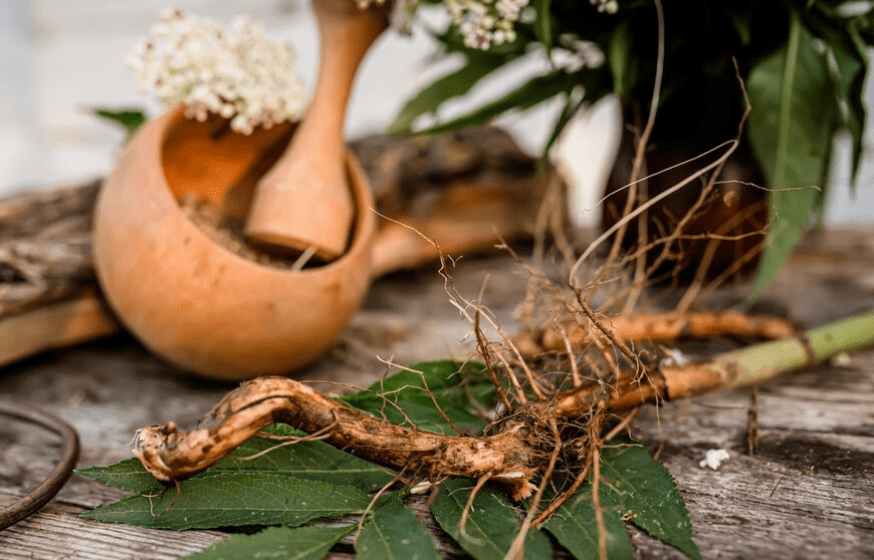
Ginseng is a popular herbal remedy that has been used in traditional medicine for centuries. It is known for its potential health benefits, including improved immune function, increased energy levels, and reduced stress. Ginseng can be consumed in various forms, including capsules, teas, and extracts. It is also used in skincare products for its antioxidant and anti-inflammatory properties. Some research suggests that ginseng may also have potential in improving cognitive function and reducing the risk of certain chronic diseases. However, it’s important to consult with a healthcare professional before using ginseng, as it may interact with certain medications and have potential side effects. Overall, ginseng can be a valuable addition to a healthy lifestyle when used responsibly and in moderation.
In conclusion, growing and harvesting your own ginseng can be a rewarding and profitable endeavor. By following the tips and techniques outlined in this guide, you can ensure that your ginseng plants thrive and produce high-quality roots. Whether you are a seasoned gardener or a beginner, this comprehensive guide will provide you with all the information you need to successfully grow and harvest your own ginseng plant seeds. Happy planting!
Frequently asked questions And Answer
You can buy ginseng plant seeds from online retailers, gardening stores, or specialty herb shops. Make sure to purchase seeds from a reputable source to ensure quality.
Ginseng plants take several years to reach maturity, typically around 5-10 years. It’s a long-term investment and requires patience and careful maintenance.
The best time to harvest ginseng roots is in the fall, after the plant has reached maturity. It’s important to harvest the roots carefully to ensure the plant’s sustainability.
While it’s possible to grow ginseng plants indoors, it can be challenging to replicate the ideal growing conditions. It’s best to grow ginseng plants outdoors in a suitable environment.
It’s important to be aware of local regulations and conservation efforts regarding ginseng cultivation. Additionally, ginseng plants are susceptible to certain pests and diseases, so proper care and maintenance are crucial.
It’s possible to use seeds from store-bought ginseng roots, but it’s important to ensure that the seeds are viable and have not been treated with chemicals that could affect their ability to germinate.
Ginseng has been used in traditional medicine for its potential health benefits, including improved energy, cognitive function, and immune support. Growing and harvesting your own ginseng allows you to have access to high-quality, organic ginseng for personal use or potential sale.
